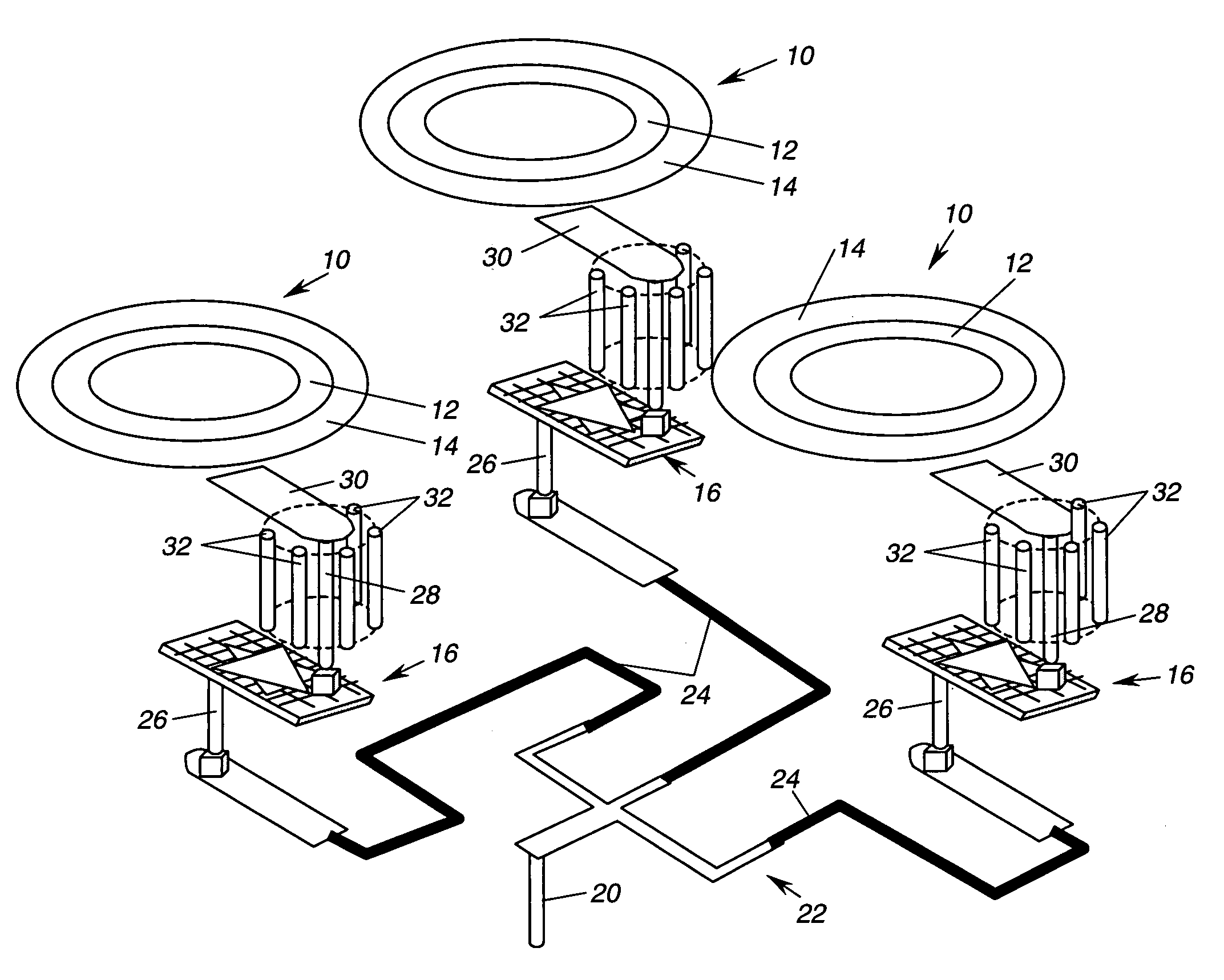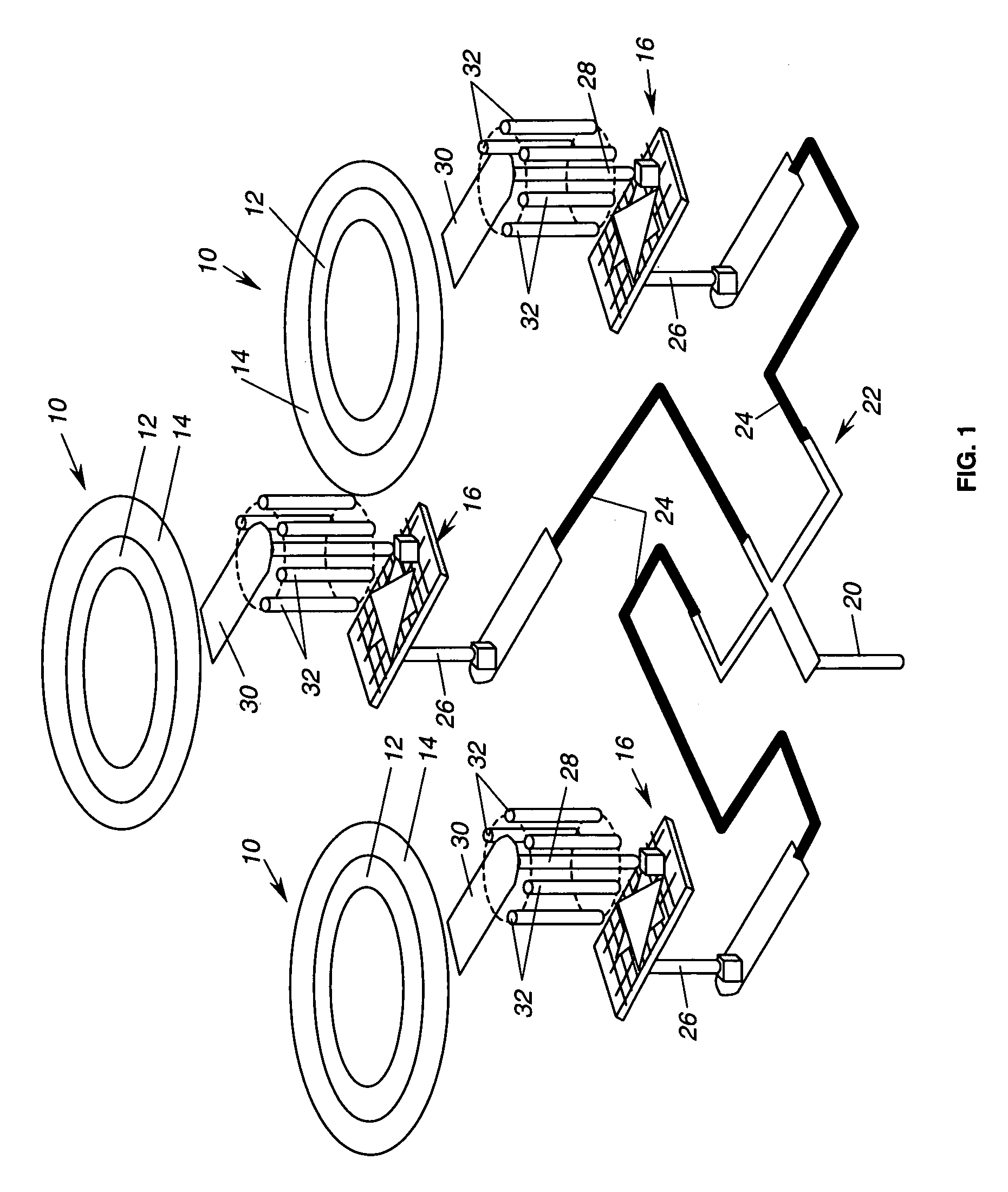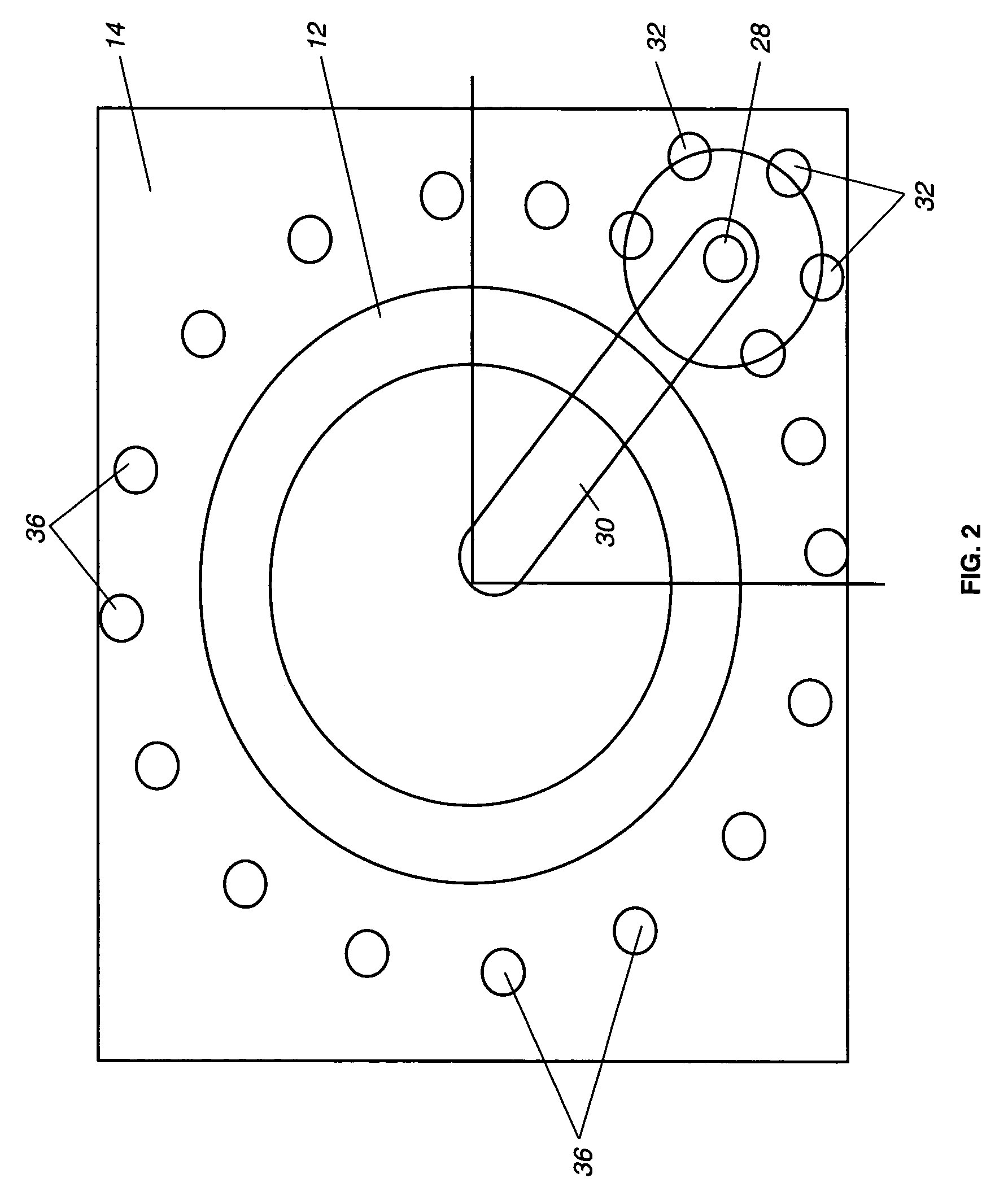Millimeter wave phased array systems with ring slot radiator element
a phased array and radiator element technology, applied in slot antennas, antennas, basic electric elements, etc., can solve the problems of prohibitively large size and weight of conventional radiator elements, relatively high manufacturing costs, and the inability of millimeter-wave frequency antenna systems disclosed by metzen et al. to work at millimeter-wave frequencies, etc., to achieve smooth rf coupling
- Summary
- Abstract
- Description
- Claims
- Application Information
AI Technical Summary
Benefits of technology
Problems solved by technology
Method used
Image
Examples
Embodiment Construction
[0020]As shown in the drawings for purposes of illustration, the present invention pertains to a phased array antenna system having ring slot radiator elements, operable at millimeter-wave frequencies. Millimeter-wave frequencies are usually defined to be in the range 30–300 GHz. The present invention has important applications with a need for operation at frequencies in the vicinity of 35 GHz, and this description is consistent with a goal of operation at approximately this frequency. Prior to the present invention, arrays of ring slot radiators have been developed for operation at much lower frequencies but have not been capable of operation at millimeter-wave frequencies. One reason for this is that making a transition from a coaxial mode of transmission to a strip line mode for low profile coupling to a ring slot radiator is subject to an increasing impedance mismatch as the frequency is increased.
[0021]In accordance with one aspect of the present invention, operation at millime...
PUM
 Login to View More
Login to View More Abstract
Description
Claims
Application Information
 Login to View More
Login to View More - R&D
- Intellectual Property
- Life Sciences
- Materials
- Tech Scout
- Unparalleled Data Quality
- Higher Quality Content
- 60% Fewer Hallucinations
Browse by: Latest US Patents, China's latest patents, Technical Efficacy Thesaurus, Application Domain, Technology Topic, Popular Technical Reports.
© 2025 PatSnap. All rights reserved.Legal|Privacy policy|Modern Slavery Act Transparency Statement|Sitemap|About US| Contact US: help@patsnap.com



